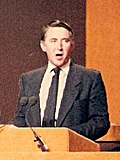| |||||||||||||||||||||||||||||||||
All 36 metropolitan boroughs, all 296 English districts and all 37 Welsh districts | |||||||||||||||||||||||||||||||||
|---|---|---|---|---|---|---|---|---|---|---|---|---|---|---|---|---|---|---|---|---|---|---|---|---|---|---|---|---|---|---|---|---|---|
| |||||||||||||||||||||||||||||||||
Local elections were held in the United Kingdom on 3 May 1979 [1] [2] (the same day as the general election). The results provided some source of comfort to the Labour Party, who recovered some lost ground from local election reversals in previous years, despite losing the general election to the Conservative Party on the same day. The Liberals also gained councillors and a council.
Contents
Labour gained 766 seats, bringing their number of councillors to 7,410.
The Conservatives lost 423 seats, leaving them with 12,222 councillors.
The Liberal Party gained 136 seats and finished with 1,059 councillors.
Changes in council control were as follows;
Labour gain from no overall control: Bassetlaw, Carlisle, Hartlepool, Newcastle-under-Lyme, South Tyneside
Labour gain from Conservative: Barrow-in-Furness, Coventry, Derby, Ipswich, Nottingham, Sandwell, Tameside, Welwyn Hatfield
Labour lose to no overall control: Thurrock
Conservative lose to no overall control: Birmingham, Cambridge, Cheltenham, Kirklees, Leeds, Pendle, Rochdale, Rugby, Warrington, Wyre Forest
Conservative gain from no overall control: Adur, Stratford-on-Avon
Conservative gain from Independent: Hart
Conservative gain from Democratic Labour: Lincoln
Liberal gain from no overall control: Medina
Independent lose to no overall control: South Lakeland, West Lindsey


